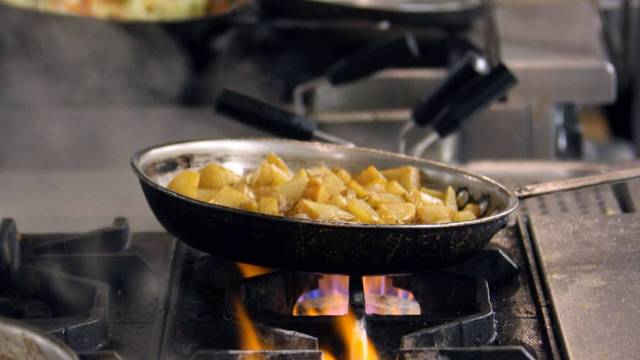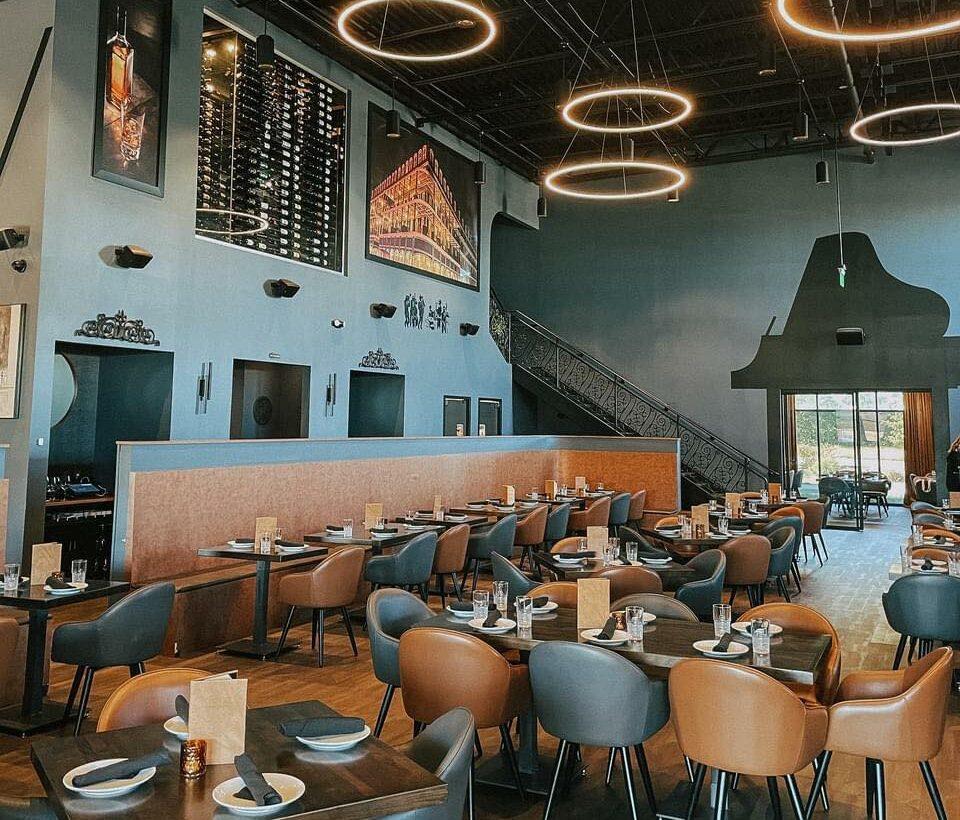Savor Genuine Oriental Cuisine With a Pan-Asian Twist for a Cooking Journey
Starting a culinary trip through authentic Eastern cuisine, boosted with a Pan-Asian twist, offers a distinct opportunity to explore the rich tapestry of flavors that define the region's varied cooking practices. This experience welcomes you to relish the beautiful balance of preferences-- wonderful, salted, spicy, and sour-- balanced by fragrant herbs and flavors. Envision the ingenious combination of Thai curry and ramen or the unanticipated joy of sushi burritos. As you consider these tempting meals, consider the cultural narratives and historical impacts that form them, each bite using a story waiting to be found.

Exploring Pan-Asian Flavors
In the realm of global gastronomy, Pan-Asian cuisine stands apart for its exceptional variety and the unified interaction of tastes from various Eastern cultures. This cooking technique celebrates the abundant customs and distinct ingredients located across the continent, producing a tapestry of preferences that is both intriguing and satisfying. Key to Pan-Asian cuisine is its capability to balance different flavors-- pleasant, salty, spicy, and sour-- while highlighting the quality and quality of each active ingredient.
From the umami-rich soy sauce of Japan to the intense chili peppers of Thailand, Pan-Asian food provides a comprehensive palette of tastes. These elements are usually incorporated in innovative means, boosting dishes with layers of intricacy. For example, the usage of fragrant natural herbs such as lemongrass and cilantro, common in Vietnamese and Thai food, adds a refreshing illumination to dishes, while the consolidation of coconut milk provides a luscious, abundant appearance.
The focus on fresh fruit and vegetables and fragrant spices guarantees that each dish is not just a feast for the preference buds but likewise for the detects. Pan-Asian food invites restaurants to embark on a cooking journey, exploring the substantial and varied landscapes of Eastern gastronomy with every bite.
Blend Meals to Attempt
While Pan-Asian food is celebrated for its typical flavors, the modern culinary landscape is increasingly welcoming combination recipes that mix these traditional aspects with influences from various other regions. This cutting-edge method not just honors the rich heritage of Eastern cookeries however additionally introduces unique taste experiences that attract modern palates.
An archetype of such a blend recipe is the Korean-Mexican taco, where marinaded bulgogi beef is covered in a warm tortilla, covered with kimchi and a hot gochujang-infused salsa. This mix marries the vibrant, savory flavors of Korea with the vibrant, fresh components of Mexican cuisine. In a similar way, sushi burritos have obtained popularity, joining together the fragile artistry of Japanese sushi with the hearty, hand-held comfort of a burrito, frequently including blend ingredients like tempura shrimp and avocado with a drizzle of wasabi mayo.
Another significant recipe is Thai curry ramen, which infuses the creamy, aromatic flavors of Thai curry into the calming broth of typical Japanese ramen, developing a harmonious mix that entices the senses. These combination recipes extend past mere novelty; they represent a cooking discussion in between societies, motivating exploration and innovation on the planet of Pan-Asian cuisine.
Essential Components and Seasonings
To really appreciate Pan-Asian food, one have to comprehend the necessary ingredients and seasonings that develop its foundation. This varied cooking design attracts from a rich tapestry of Oriental practices, using a harmonious mix of appearances and flavors. Trick active click over here now ingredients consist of soy sauce, fish sauce, and oyster sauce, which give a full-flavored umami depth necessary to Eastern recipes. Complementary to these are rice vinegar and mirin, offering a fragile level of acidity and sweetness.
Fragrant aspects are essential, with ginger, garlic, and lemongrass being ubiquitous throughout different Pan-Asian recipes. These active ingredients supply an aromatic base that boosts the complexity of tastes. Flavors such as star anise, cardamom, and cinnamon introduce heat and character, echoing impacts from areas like China and India.

Cooking Strategies and Tips
Grasping the art of Pan-Asian cuisine calls for familiarity with its unique cooking strategies, each adding to the vibrant tapestry of flavors this culinary tradition is celebrated for. Central to these methods is the stir-fry, a rapid cooking strategy that maintains the dietary honesty and dazzling colors of active ingredients. Using a frying pan, the stir-fry approach permits for even heat distribution, crucial for achieving the characteristic appearance and taste equilibrium of Pan-Asian meals.
One more fundamental technique is steaming, especially widespread in Chinese food. look at more info This gentle technique river cafe preserves the natural tastes and nutrients of active ingredients, making it ideal for fish and shellfish and veggies. Dumplings, a beloved staple, frequently take advantage of steaming, leading to soft, delicious structures.
Barbecuing, additionally indispensable, passes on great smoky depths to recipes such as Korean bulgogi or Japanese yakitori (asian fusion restaurant). This strategy frequently entails seasoning components, allowing tastes to penetrate deeply before food preparation over an open flame or warm plate
Lastly, grasping the art of balancing flavors-- sweet, sour, salted, bitter, and umami-- is important. Effectively layering these aspects can raise a meal from common to extraordinary, providing a complex and pleasing culinary experience that embodies the essence of Pan-Asian food.
Dining Experiences Worldwide
Throughout the globe, Pan-Asian cuisine uses an unrivaled eating experience, celebrated for its abundant tapestry of flavors and lively presentations. This culinary sensation has actually gone beyond social boundaries, catching the hearts and tastes of food enthusiasts worldwide. In worldwide cities fresh York, London, and Sydney, Pan-Asian dining establishments act as melting pots where culinary customs from Thailand, Japan, China, and past converge, providing diners with an eclectic mix of dishes that highlight the area's diversity.
The global allure of Pan-Asian food lies in its capability to offer both credibility and innovation. Cooks masterfully wed standard active ingredients such as lemongrass, soy sauce, and miso with modern techniques, resulting in meals that are both refreshingly new and familiar. This fusion enables restaurants to start a culinary journey that values heritage while accepting modernity.
In addition, dining experiences are raised via attentively designed atmospheres that mirror the principles of Pan-Asian visual appeals. From minimalist Japanese-inspired interiors to vivid Thai-themed rooms, each restaurant uses an one-of-a-kind ambiance that matches the cooking offerings. As a result, patrons are not just taking in a meal yet partaking in a cultural experience, making Pan-Asian eating a genuinely global phenomenon.
Final Thought
The expedition of Pan-Asian cuisine supplies an extensive understanding of the elaborate interaction of flavors and culinary practices throughout Asia. By welcoming fusion recipes such as Thai curry ramen and sushi burritos, the cooking journey not only highlights the versatility of typical ingredients yet also showcases innovative contemporary methods. This gastronomic experience, enriched by essential spices and cooking methods, supplies a special chance to appreciate the multiculturalism and culinary artistry that define Pan-Asian cuisine on a global scale.
Embarking on a cooking journey via authentic Asian food, enhanced with a Pan-Asian twist, provides a special opportunity to explore the rich tapestry of flavors that specify the area's diverse cooking traditions.In the world of worldwide gastronomy, Pan-Asian food stands out for its remarkable diversity and the unified interaction of tastes from different Eastern cultures. Secret to Pan-Asian food is its ability to stabilize different flavors-- wonderful, salted, spicy, and sour-- while highlighting the freshness and high quality of each active ingredient.
